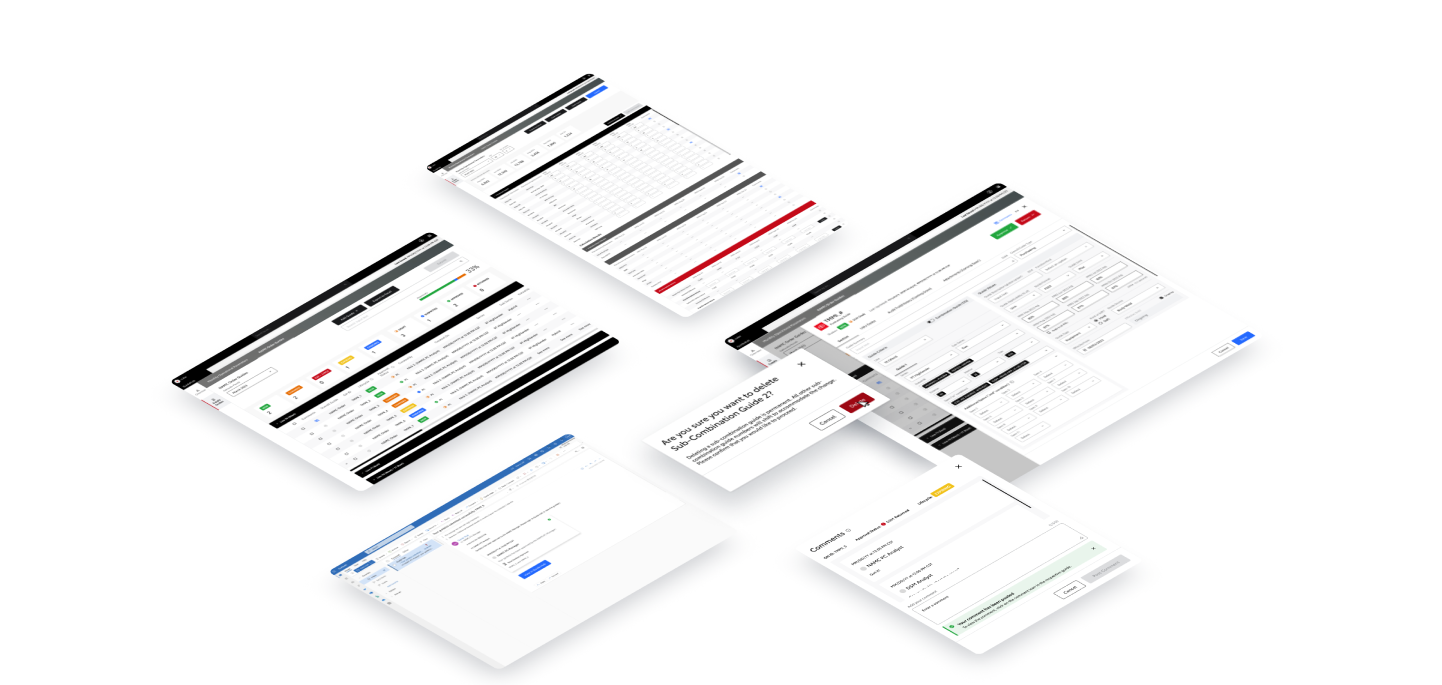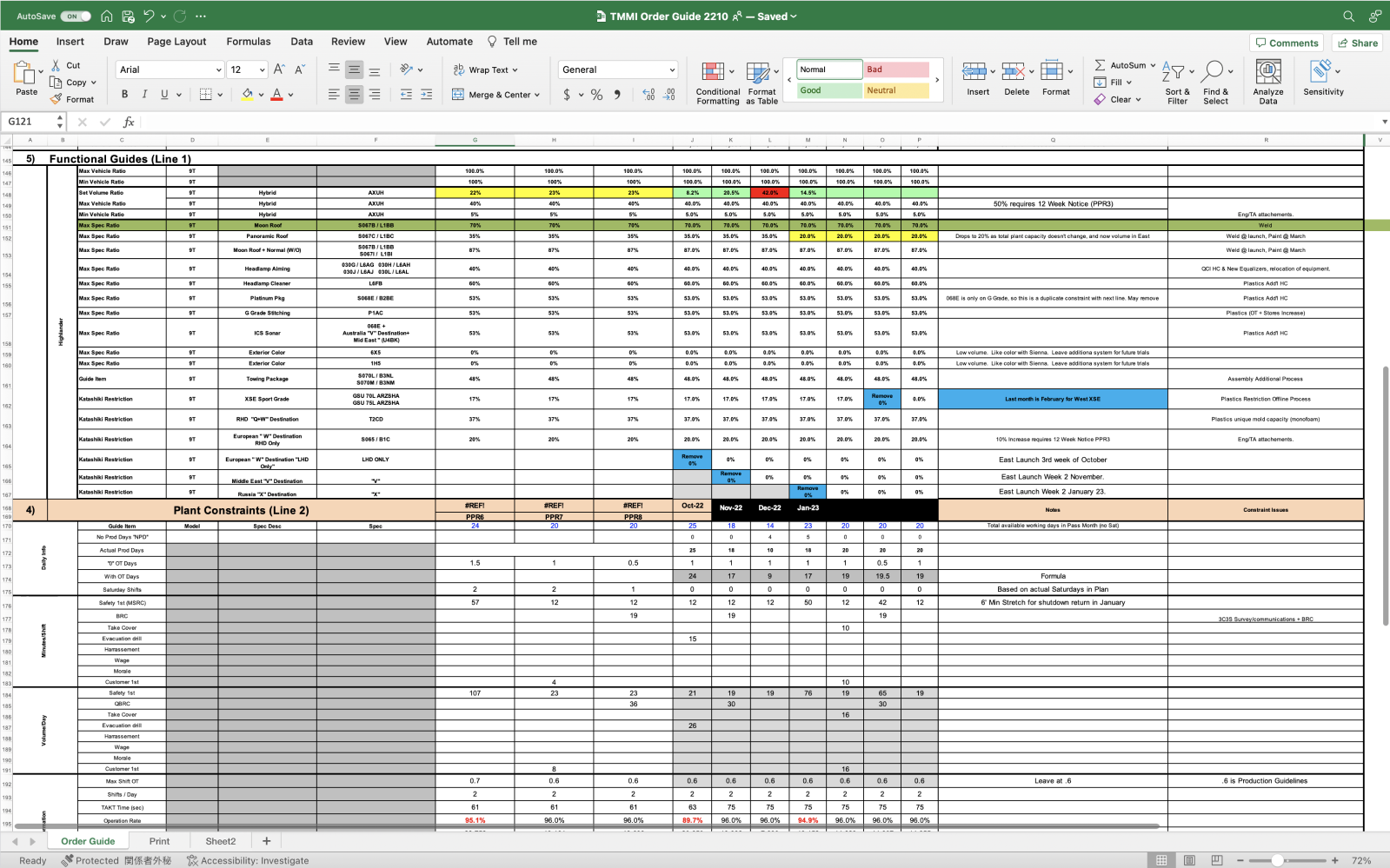* Please note that not all project information is available due to client confidentiality agreements (NDAs). For further details or inquiries about any of the projects mentioned, please do not hesitate to get in touch with me. Thanks for understanding!
Our client wanted us to design and develop a single source truth for supplier, manufacturing, and other strategic guides to guide sales and operation plans
What we created is a custom-developed platform dubbed ‘The Hub’, that enables a leading vehicle manufacturer’s demand and supply management team to capture true granularity of underlying constraints and traceable links between supply and manufacturing guides

Team
2 UI/UX Designers
1 Product Manager
3 Developers
4 Data Engineers
Timeline
6 Months to Release
Contributions
Co-led design of product features, such as form creation and management and user access management
Produced multiple iterations of low and high-fidelity wireframes
Facilitated review sessions with 10+ stakeholders, including end users and client leadership
Drove delivery of design deliverables, such as an personas, information architecture, and prototype video demoes
Demoed prototypes across client’s 400k employees
Impact
As quoted by end users: “The Hub is very user friendly and intuitive, requiring minimal training” and “user interface looks polished and professional
Reduced an estimated 220+ hrs. of manual work / month for end users
Received recognition by the Senior Manager of the account: “Thank you for all of the hard work and contribution to the Project! Your insights and dedication are widely recognized and appreciated by the account team!”
Why change the status quo?
Change. The mere mention of the word can cause people to feel uneasy. There are endless behavioral studies dedicated to determining why people resist change. Whether this change is a career shift or teaching yourself new technology – no matter how you slice it, change is never easy. Based on our human nature to resist change and that companies are a large collective of individuals, it’s no wonder why making a dramatic process change at work is a massive undertaking.
Companies with detailed business plans and increasingly complex supply and demand processes, our client relied on a 40-year old spreadsheet software, aka Excel, to drive their strategic-decision making. The problem with Excel? Errors are common. Although it’s been used for decades, spreadsheets are poorly suited for enterprise-wide planning and enterprise performance management. Specifically with the client, the company learned the hard way (very hard way) during the pandemic when the global supply chain system was massively disrupted.
Current State
In a post-pandemic world, they sought to move away from Excel’s limitations to best-in-class software to support its supply and manufacturing guides process. And the best part? Our team of designers, developers, data scientists, and functional counterparts get to pilot one of the US’s largest automakers in navigating the unknown territories of change. But, again, let’s just remind ourselves that change is never easy.

Intro
Our cross-functional team of designers, developers, data scientists, and supply chain SMEs had an ambitious 5 months to design, build, test, and launch the first MVP of its kind, dubbed ‘the Hub’. Our ambitions begin with a custom-developed product that replaces today’s current manual and ungoverned Excel process of creating and managing production guides critical to the journey of producing a vehicle from start to finish. With this context in mind, the goal of the Hub MVP is to: Leverage best-in-class UX and software principles to reimagine the current ways of working for a leading US automaker’s production guide creation process.

Challenge
What does it take to build a custom software?
For our initial discovery phase with the functional team, the design team and I quickly learned that our business counterparts have zero experience with working with designers, let alone designing, building, testing, and launching a custom software from scratch. Supply chain leadership assumed the design team will be in and out in a matter of weeks after creating some wireframes and tackling “quick wins”; however, we rallied our product counterparts to establish an end-to-end design approach with considerations to scope limitations.
Product Mindset
I. Project-based organizations, such as consulting firms, measure success by outputs rather than outcomes
II. In services, the primary focus is the client and how to keep them satisfied opposed to a product mindset where the focus is the impact to the customer
III. Lack of experienced product owners and an internal product owner
Stakeholder Alignment
I. The client had different intentions from the end users of the product (i.e. wanting more features than needed)
II. The end users are resistant to change from their current processes
III. Deloitte leadership team had different intentions from the delivery team
Agile Approach
I. Optimize is the name of the goal in client services, meaning there is a mindset of doing the maximum possible with the least amount of resources
II. Product backlog is a foreign concept
III. Team had to work at an unsustainable pace
Solution:
Introducing The Hub 1.0
The Hub 1.0 has the ability to create, modify, and delete guides with backend functionality that standardizes form inputs. It also leverages system notifications to increase transparency, while offering users insight into managing guides in different stages of the approval and lifecycle process.
Highlight 1: Persona Based Design
To provide a unified experience while paying particular attention to each persona’s needs, the design team and I documented 3 user personas: the factory analyst, the factory manager, and vehicle supply analyst. We designed wireframes in a click-by-click sequence. This not only allowed us to understand the different interactions between a persona and an application but also how data and system interactions flow from one persona to another.
Highlight 2: Evolving Design System
To maintain consistency and scalability across the clients multitude of enterprise applications, we had to leverage an existing design system, Carbon, and repurpose components to fit our use case. One of the drawbacks of the Carbon design system is that it required us to expand upon it to suit our unique use case (i.e. a complex workflow application).

Highlight 3: Platform Alignment
We ensured a seamless alignment of our product with the client’s existing offerings from a design perspective. This meant attention to detail, such as maintaining consistency in button placement and styling, ensuring a similar visual experience across various platforms. We maintained coherence in language and messaging, contributing to the client and brand’s identity. By sticking to these practices, we not only enhanced user familiarity but also contributed to a cohesive brand presence, integrating our product within the client’s broader product portfolio.
Here is a look into some of the high fidelity wireframes that were sent out for development production:


What’s Next?
The platform is under development and set to release in Q3 ‘23. At the time of updating this, the MVP Release of the platform has been well-received with end users expressing “The Hub is very user friendly and intuitive, requiring minimal training” and “user interface looks polished and professional.” The client has vetted additional enhancements and new capabilities set to release in Q4 ‘23!
